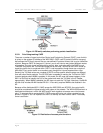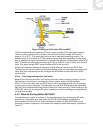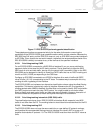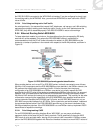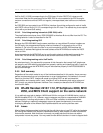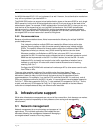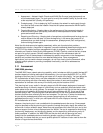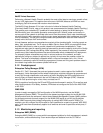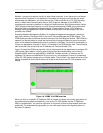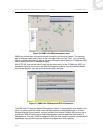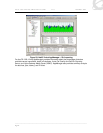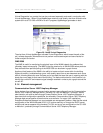
Voice over Wireless LAN Solution Guide v1.0 December 2005
______________________________________________________________________________________________________
Page 49
1. Assessment – Network Health Checks and WLAN Site Surveys (post-deployment) are
critical assessment items. The main goal is to verify the network’s ability to provide voice
at the required QoE (Quality of Experience).
2. Predeployment – Prior to deploying VoIP handsets, the network is made ready through
the rollout of QoS across the network. Note that this phase assumes the WLAN itself is
already deployed.
3. Ongoing Monitoring – Keeping tabs on the performance of the converged network is
crucial to ensuring that voice quality continues to meet expectations as the network
grows and evolves over time.
4. Reporting and Planning – Keeping track of exceptions and problems and forming plans to
resolve issues is the last step. It is also the beginning, in the sense that resolution of
problems takes you back through the assessment, predeployment (QoS configuration),
and monitoring phases again.
Nortel ties this business cycle together seamlessly with a set of products that provide a
comprehensive solution, comprised of integrated, innovative standards-based technologies such
as RTCP-XR for detailed real-time management of calls in progress. The overall solution is
referred to as Proactive Voice Quality Management (PVQM). Carefully note that the four phases
are part of a cyclical process. Periodic assessments are part of the maintenance plan for
convergence. Each of these phases is addressed by specific components in the management
portfolio and provides the context for more detailed descriptions. Some management
applications, such as certain element managers, do not fit as cleanly into the framework, either
crossing multiple phases or providing incomplete functionality, and will be addressed as
exceptions.
3.1.1 Assessment
WMS 2300 planning
The WMS 2300 has a network planning capability, which includes an ability to predict the best AP
locations based on building attenuation characteristics. You can import AutoCAD, GIF, or JPEG
drawings of the floor plans in a building and create a 3-D model of the facility. You can define the
RF characteristics of walls, floors, and other obstacles to build a detailed RF map. The WMS
uses this map along with other information about the number of users and throughput
expectations to simulate a site survey of the facility and plot the locations of APs.
This planning tool is very useful in the early stages of a WLAN network deployment, because it
accelerates many of the early stages of a site survey and can potentially eliminate certain other
tasks related to the site survey process. For example, the typical initial site visit can be truncated
to a walk-around inspection for things that typically pose problems with RF, like a row of filing
cabinets along a wall. The planning tool now removes much of the initial guesswork about AP
locations that was done manually by hand and compass. The tool may, in some circumstances,
let you skip the predeployment site survey process (assuming that you will perform a
postdeployment survey), in which you use tripods with APs and a laptop to manually measure the
RF characteristics of an area.
However, the planning tool is not a substitute for the postdeployment site survey. Some people
might be tempted to use the planning tool to predict coverage and simply deploy the network as
shown with no other validation steps. Nortel does not recommend this use of the tool, and in fact
does not support it when voice is deployed over the WLAN. The tool is supported for simplifying
the planning, deployment, and site survey phases, and for streamlining and reducing many of
these processes. In addition, the WMS 2300 and the plan built with the planning tool carry
forward into the postdeployment and monitoring phases, resulting in further efficiencies.
Specifically, the same map that you use to predict optimal AP locations is later used to show the
location of rogue devices and clients.



